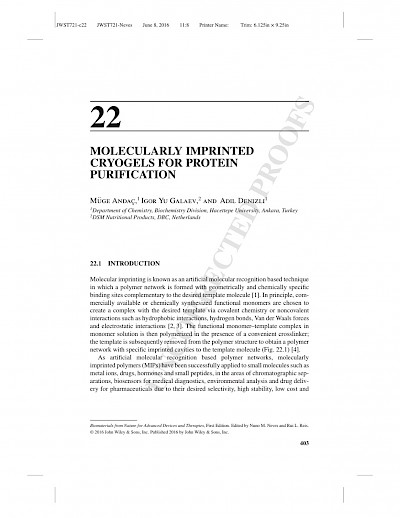New Article Published in Biomaterials from Nature for Advanced Devices and Therapies
Molecularly Imprinted Cryogels for Protein Purification
Molecular imprinting is known as an arti cial molecular recognition based technique in which a polymer network is formed with geometrically and chemically speci c binding sites complementary to the desired template molecule [1]. In principle, com- mercially available or chemically synthesized functional monomers are chosen to create a complex with the desired template via covalent chemistry or noncovalent interactions such as hydrophobic interactions, hydrogen bonds, Van der Waals forces and electrostatic interactions [2, 3].

